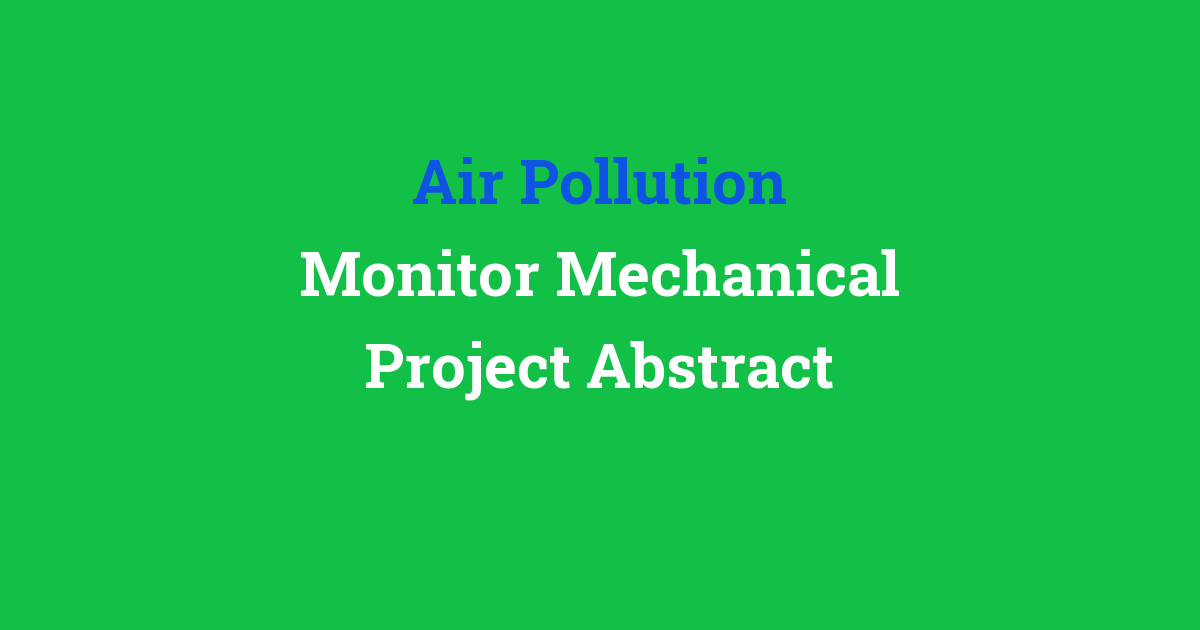Abstract: Development of a mechanical system for monitoring air pollution levels.
Introduction
Air pollution has become a major concern in today’s world due to the increasing industrialization and urbanization. It has adverse effects on human health and the environment. Monitoring air pollution levels is essential to take preventive measures and control the pollution. In this project, we aim to design an air pollution monitor using mechanical methods.
Problem Statement
The current air pollution monitoring systems are expensive and require high maintenance. They are also not portable and cannot provide real-time data. There is a need for an efficient and cost-effective solution for monitoring air pollution levels.
Existing System
The existing air pollution monitoring systems use electronic sensors to detect the concentration of pollutants in the air. These sensors are sensitive to environmental conditions and require calibration from time to time. They are also prone to damage and malfunction, leading to inaccurate readings.
Disadvantages of Existing System
1. Expensive: The electronic sensors used in the existing system are costly and require regular maintenance.
2. Not Portable: The current monitoring systems are stationary and cannot be moved to different locations for monitoring.
3. Inaccurate Readings: The sensors may malfunction or get damaged, leading to inaccurate readings of air pollution levels.
4. High Maintenance: The existing systems require high maintenance and calibration to ensure accurate readings.
Proposed System
We propose to design an air pollution monitor using mechanical methods. The monitor will use mechanical filters to capture pollutants from the air and analyze them. The mechanical system will be cost-effective, portable, and provide real-time data of air pollution levels.
Advantages of Proposed System
1. Cost-effective: The mechanical air pollution monitor will be cost-effective compared to electronic sensors.
2. Portable: The monitor can be easily moved to different locations for monitoring air pollution levels.
3. Real-Time Data: The mechanical system will provide real-time data of air pollution levels for immediate action.
4. Low Maintenance: The proposed system will require low maintenance compared to the existing electronic sensors.
Features of the Air Pollution Monitor
1. Mechanical Filters: The monitor will use mechanical filters to capture pollutants from the air.
2. Real-Time Data: The system will provide real-time data of air pollution levels for immediate action.
3. Portable: The monitor will be portable and can be easily moved to different locations for monitoring.
4. Cost-effective: The system will be cost-effective compared to existing electronic sensors.
5. Low Maintenance: The proposed system will require low maintenance and calibration.
Conclusion
In conclusion, the air pollution monitor using mechanical methods is a cost-effective and efficient solution for monitoring air pollution levels. It overcomes the limitations of the existing electronic sensors and provides real-time data for immediate action. The mechanical system is portable, low maintenance, and accurate in capturing pollutants from the air. The proposed system is a step towards a cleaner and healthier environment for future generations.

